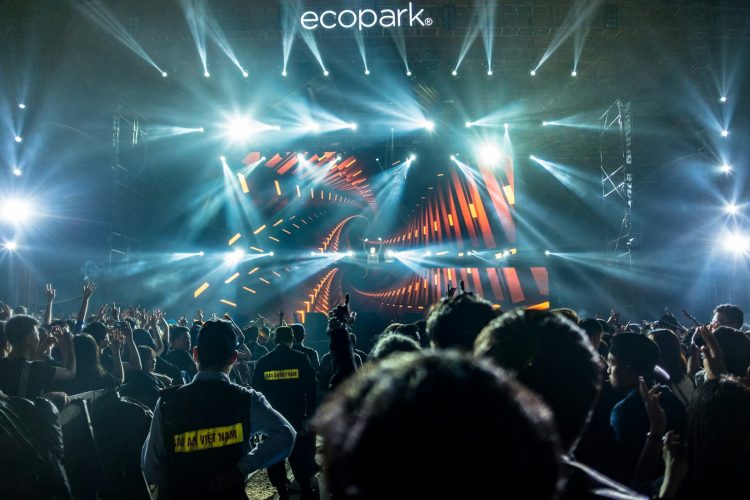The music industry has undergone tremendous transformations over the last few decades, driven by technological advancements that have reshaped how people consume music, engage with artists, and experience live events. Among the most significant of these transformations is the rise of virtual music festivals, which offer music fans a novel way to enjoy live performances from the comfort of their homes. Although virtual festivals first emerged as a temporary solution during the COVID-19 pandemic, the potential for these events to revolutionize the live music experience has been recognized by industry professionals, artists, and audiences alike. As we look toward the future, the continued development of virtual music festivals promises to change not only the way we experience music but also how we connect with one another, artists, and cultures around the world.
The Emergence of Virtual Music Festivals
Virtual music festivals gained widespread popularity during the global pandemic, a time when traditional live events were put on hold due to safety concerns and social distancing measures. Faced with the challenge of connecting with fans without physical gatherings, many artists and event organizers turned to digital platforms as a way to reach their audiences. What began as a response to the pandemic quickly grew into a new form of entertainment, offering fans the opportunity to enjoy live performances from anywhere in the world.
The appeal of virtual music festivals was immediate. With the ability to attend from home, fans were no longer limited by geographic constraints or the high costs of attending in-person events. Moreover, these virtual events provided an opportunity for global access to artists who may not have otherwise performed in certain regions. The traditional barriers of travel, accommodation, and ticket prices were eliminated, making music festivals more accessible to a wider audience.
Some of the most notable virtual festivals include the “Tomorrowland Around the World” festival, held in 2020, and the “Lollapalooza Virtual Festival,” which showcased performances from well-known artists across various genres. These events were delivered through immersive online platforms that included virtual stages, interactive features, and even opportunities for fans to purchase merchandise and engage with other attendees in real time. While these festivals were initially a response to the pandemic, they demonstrated the potential for virtual experiences to become a permanent fixture in the live music industry.
Technological Advancements Shaping the Future of Virtual Festivals
The future of virtual music festivals will be driven by technological innovations that enhance the immersive experience for both artists and attendees. Virtual reality (VR), augmented reality (AR), and 3D graphics are poised to play a key role in creating more engaging and lifelike festival environments, bridging the gap between the physical and digital worlds.
Virtual reality offers the potential to transform the way people attend live events. By wearing VR headsets, users could feel as if they are physically present at a festival, interacting with other attendees and experiencing performances as though they were standing in front of the stage. This immersive experience could even allow for different camera angles, enabling fans to see their favorite artists up close or from unique perspectives. VR technology could also provide interactive features, such as the ability to choose which performances to attend or participate in virtual meet-and-greets with artists.
Augmented reality, on the other hand, could enhance virtual music festivals by overlaying digital elements onto the physical world. Fans attending virtual festivals from home could use their smartphones or AR glasses to interact with digital content in real time. For example, AR could enable fans to see virtual fireworks, light shows, or holograms of their favorite artists performing on stage, bringing the excitement of live festivals to their living rooms. This technology has the potential to make virtual festivals feel more dynamic and responsive, creating a more personalized experience for attendees.
In addition to VR and AR, advancements in 3D graphics and gaming technology are also shaping the future of virtual music festivals. Platforms like Fortnite and Minecraft have already hosted virtual concerts that take advantage of 3D environments to create expansive, visually stunning worlds for fans to explore. These games allow users to interact with the virtual environment and even join up with friends in the same digital space. As these platforms evolve, they will likely continue to incorporate more sophisticated tools for artists and event organizers to craft visually captivating festival experiences, further blurring the lines between reality and the digital world.
Accessibility and Inclusivity: Breaking Down Barriers
One of the most exciting aspects of virtual music festivals is their potential to increase accessibility and inclusivity in the music industry. Traditional music festivals can be expensive and difficult to attend for individuals with disabilities, financial constraints, or geographical limitations. Virtual festivals, by contrast, can offer a more affordable and accessible alternative, enabling people from all walks of life to enjoy live music experiences.
For people with disabilities, virtual festivals could provide opportunities that might otherwise be inaccessible. Individuals with mobility impairments or sensory processing disorders, for example, can experience performances from the comfort of their homes, eliminating the need for extensive travel or navigating large, crowded venues. Virtual events can also include features like closed captioning, sign language interpreters, and audio descriptions, making it easier for people with hearing or vision impairments to participate in the festivities.
The affordability of virtual music festivals also makes them more inclusive for fans who may not be able to attend high-priced live events. While in-person festival tickets often come with hefty price tags, virtual tickets are typically much more affordable, opening the door to a wider range of fans. Moreover, the lack of travel and accommodation expenses makes these festivals even more budget-friendly.
Geographic barriers are also eliminated with virtual music festivals. While in-person events are often limited to certain cities or regions, virtual festivals can be attended by anyone with an internet connection, regardless of location. Fans from around the world can experience a festival and interact with people from different cultures, broadening their horizons and creating a sense of global community. This aspect of virtual festivals could encourage cross-cultural exchange and introduce fans to new genres, artists, and musical traditions that they may not have been exposed to otherwise.
The Social Experience of Virtual Festivals
One of the defining features of traditional music festivals is the sense of community they foster. Fans gather in large crowds, sharing in the collective experience of enjoying live music. Virtual music festivals aim to recreate this sense of connection by integrating social elements into the online experience.
Virtual platforms often include features such as chat rooms, live streaming, and social media integration, which allow attendees to interact with one another during the event. Fans can engage in real-time conversations, exchange thoughts on performances, and even send virtual gifts or emojis to their favorite artists. This creates an interactive, social experience that mirrors the excitement of live festivals, where people connect with one another and with the music in a shared space.
Additionally, virtual festivals could allow for greater collaboration between artists and fans. In the future, artists may be able to use digital platforms to interact with their fans in new and creative ways. Virtual meet-and-greets, Q&A sessions, and backstage tours could become common features, offering fans the chance to connect with their favorite performers in a more intimate and personalized way. These interactions could create deeper connections between artists and their audiences, fostering a sense of loyalty and community.
Challenges and Considerations for the Future of Virtual Festivals
While virtual music festivals hold tremendous potential, they are not without their challenges. One of the key considerations is the need for a stable and high-quality internet connection. Streaming live performances in high resolution, particularly when VR or AR elements are involved, requires substantial bandwidth. As a result, access to virtual festivals may be limited for individuals in areas with poor internet infrastructure. In order for virtual festivals to reach their full potential, it will be crucial for organizers and technology providers to invest in improving internet access and ensuring that platforms can accommodate large numbers of attendees.
Another challenge is the potential for virtual festivals to diminish the unique appeal of in-person experiences. There is something special about physically attending a music festival—whether it’s the energy of the crowd, the thrill of being in the presence of an artist, or the shared experience of dancing with strangers. While virtual festivals can replicate many of these aspects, it remains to be seen whether they can fully capture the magic of live, in-person events. The future of virtual festivals may involve a hybrid model, where fans can choose between attending a physical event or participating virtually, each with its own distinct advantages.





